
Top 10 Warning Signs of Hidden Leaks in Your Home You Shouldn’t Ignore
Hidden leaks in a home can lead to significant damage, yet many homeowners underestimate their impact. This article will highlight the top 10 warning signs of hidden leaks, such as unexplained increases in water bills and water stains on walls and ceilings. By understanding these signs, readers will be better equipped to identify potential issues early, protecting their property and preventing costly repairs. Homeowners often overlook subtle changes, but recognizing these clues can save money and stress in the long run, especially when dealing with sinks, HVAC systems, and other plumbing-related concerns.
1. Unexplained Increases in Water Bills

Unexplained increases in water bills can signal hidden leaks in a home. Understanding water usage patterns is essential for identifying abnormal rate changes. Seasonal variations may affect costs, but comparing usage with neighbors’ consumption can highlight unusual spikes. Detecting leaks early can minimize financial strain by addressing potential corrosion and drainage issues, crucial for effective san diego services amidst concerns like gas leaks. Homeowners can refer to a guide for homeowners or visit the san diego county site for additional resources.
Understanding Water Usage Patterns
Understanding water usage patterns is vital for homeowners aiming to identify potential leaks. A guide for homeowners on regular monitoring can reveal discrepancies, such as sudden spikes in consumption linked to essential appliances, including washing machines or water heaters. Additionally, when using a gas stove, any shifts in the water supply may indicate underlying drainage issues that could lead to more significant problems if not addressed promptly. For more information, visit the fema homepage or the san diego county site.
Identifying Abnormal Rate Changes
Identifying abnormal rate changes in water bills is a key factor in detecting hidden leaks. Homeowners should regularly review their water consumption using a guide for homeowners; an unexpected spike can indicate a silent leak, especially when related to daily activities like using a stove or other appliances. As the cdc website emphasizes the importance of maintaining good indoor air quality, addressing potential water leaks promptly is critical to avoiding further complications, especially during severe weather information that may exacerbate drainage issues.
Seasonal Variations in Water Bills
Seasonal variations in water bills are common due to changes in weather and household habits. Accessing weather information can help homeowners anticipate these changes. However, an unexpected spike may indicate a hidden leak, especially if unpleasant odors arise from areas like the tank or if mildew starts to develop. Ignoring these signs can lead to serious issues, including the risk of mold or diseases related to water poisoning, making it essential for homeowners to monitor their usage and conduct regular inspections. The guide for homeowners and the San Diego County site provide valuable resources for maintaining your home.
Comparing With Neighbors' Consumption
Comparing water consumption with neighbors can reveal discrepancies that may indicate hidden leaks. Using a guide for homeowners can help identify such issues. If a household’s water bill consistently exceeds that of surrounding homes, it may suggest issues like faulty valves or unnoticed leaks. Additionally, excessive moisture can affect indoor air quality and contribute to soil saturation, increasing the risk of carbon build-up and combustion issues if not managed properly. Accessing lung health resources can provide further insights into maintaining a healthy home environment.
Detecting the Impact of Leaks on Budgets
Detecting the impact of leaks on budgets is essential for homeowners. An unnoticed leak can cause significant increases in water bills, leading to financial fatigue over time. For instance, leaks from a faulty water heater, hose, or even a furnace can waste considerable amounts of water, making it crucial to identify and address these issues promptly to protect both the home and the household budget.
2. Water Stains on Walls and Ceilings

Water stains on walls and ceilings can indicate significant issues within a home. Identifying the types of water stains is crucial for effective leak detection, while a moisture assessment helps determine the extent of the damage. Evaluating the source of these stains, including issues with plumbing pipes, is essential. Recognizing how paint and wall texture respond to moisture is also important, as ignoring these signs can lead to long-term problems, including carbon monoxide risks arising from mold growth.
Identifying Types of Water Stains
Identifying types of water stains is crucial for homeowners who want to detect potential water leaks early. Stains that appear brown or yellow often indicate a slow leak, while black or green stains may suggest mold growth, which poses risks to lung health. Homeowners can also use a food coloring test in toilets to check for leaks; if the color appears in the bowl without flushing, it signals a leak that requires immediate attention. Regularly inspecting walls and ceilings can prevent more extensive damage and costly repairs associated with ignored leaks.
The Importance of Moisture Assessment
The importance of moisture assessment cannot be overstated when it comes to identifying hidden water leaks. A thorough evaluation helps detect issues within the plumbing system before they escalate, including leaks that may originate from the central heating system. Leveraging effective water leak detection techniques ensures homeowners not only save money but also enhances their property’s overall health—ultimately leading to improved customer service from restoration professionals who can address these problems swiftly and efficiently.
Determining the Source of Stains
Determining the source of water stains on walls and ceilings is pivotal for homeowners seeking to prevent costly water damage. Leaks can stem from various issues such as improper irrigation systems, faulty plumbing, or backflow problems that disrupt normal water flow. Conducting an assessment of ventilation and sealing around windows and doors can also help reveal hidden leaks, allowing property owners to address these concerns effectively and safeguard their homes from further deterioration.
Role of Paint and Wall Texture in Indicators
The paint and wall texture in a home can serve as vital indicators of underlying leaks. When stains appear, especially on ceilings, they may signal changes in pressure from hidden plumbing issues. Homeowners should consult their insurance information institute to understand coverage related to water damage, which can be crucial when addressing these signs, particularly if damage affects areas like the lawn due to improper drainage.
Long-Term Effects of Ignoring Stains
Ignoring water stains on walls and ceilings can lead to serious long-term effects, including structural damage and mold growth. Stains often indicate underlying issues with pipes, and without proper inspection, these problems can worsen, resulting in costly repairs and health risks associated with mold exposure. Homeowners in San Diego County should recognize these signs early, as neglecting them may turn minor leaks into major health hazards and financial burdens.
3. Moldy or Musty Odors

Moldy or musty odors are often key indicators of hidden leaks within a home. Recognizing signs of mold growth is essential for assessing air quality and its implications on health. Common areas for mold development, such as the shower and bathroom, require attention. Understanding how humidity levels impact leak detection is critical, along with steps to effectively eliminate unpleasant odors.
Recognizing Signs of Mold Growth
Recognizing signs of mold growth is essential for maintaining a healthy home. Homeowners may notice moldy or musty odors, which often indicate moisture problems and potential leaks. Common areas for mold development include bathrooms, kitchens, and around windows, where humidity levels are typically higher. Addressing these odors promptly can help prevent further issues, including harm to air quality and health risks associated with mold exposure.
Assessing Air Quality and Its Implications
Assessing air quality is crucial for homeowners experiencing moldy or musty odors, as it can directly impact health and comfort. High humidity and stagnant air can foster mold growth, leading to respiratory issues and other health complications. By monitoring humidity levels and ensuring proper ventilation, homeowners can mitigate these risks and create a healthier living environment, while also addressing the potential hidden leaks that may be contributing to the moisture problem.
Common Areas for Mold Development
Common areas for mold development include bathrooms, kitchens, and basements, where moisture buildup is often a concern. These spaces tend to have higher humidity levels, creating an ideal environment for mold growth if leaks are present. Homeowners should pay attention to visible signs of dampness or mold in these areas, as early detection can prevent further damage to their property and health risks associated with exposure.
Impact of Humidity Levels on Leak Detection
Humidity levels play a critical role in the detection of hidden leaks within a home. High humidity can exacerbate existing moisture issues, making it easier for mold to thrive and for odors to become noticeable. Homeowners should regularly check humidity levels, especially in high-risk areas such as bathrooms and kitchens, as maintaining appropriate moisture levels not only helps in identifying leaks but also safeguards health by reducing the chances of mold-related complications.
Steps to Eliminate Odors Effectively
To effectively eliminate moldy or musty odors, homeowners should first identify and address the moisture source that may be causing the problem. Cleaning affected areas with a mixture of water and mild detergent can help remove mold spores and bacteria, while using a dehumidifier in high-moisture spaces helps reduce humidity levels. Regular inspection and maintenance of plumbing systems can prevent hidden leaks and ensure a healthier indoor environment, ultimately enhancing air quality and comfort.
4. Soggy or Spongy Flooring
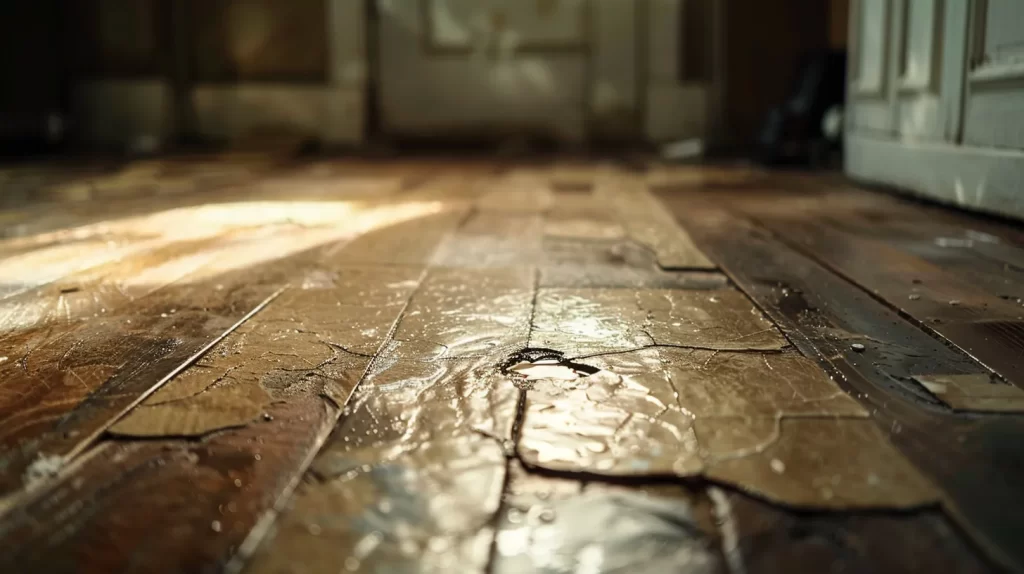
4. Soggy or Spongy Flooring
Soggy or spongy flooring is a clear indicator of moisture issues that may stem from hidden leaks. Understanding the causes of flooring damage is essential for addressing concerns effectively. Different types of flooring may exhibit signs of water damage, making a timely assessment crucial. Prolonged moisture exposure can lead to structural damage and health risks. Homeowners must know how to fix damaged flooring to maintain a safe living environment.
Understanding Causes of Flooring Damage
Understanding the causes of flooring damage is crucial for homeowners concerned about hidden leaks. Soggy or spongy flooring often results from persistent water exposure, which can arise from issues such as leaking plumbing, overflowing appliances, or compromised foundations. Knowledge of these factors not only allows for early detection of leaks but also guides homeowners in addressing potential hazards before they escalate into significant repairs or health risks.
Identifying Different Types of Flooring Affected
Identifying different types of flooring affected by water damage is crucial for timely repairs. For instance, hardwood flooring can warp and swell when exposed to moisture, while carpets may become soggy and develop mold. Homeowners should regularly inspect various flooring types, including laminate, tiles, and vinyl, as each may show unique signs of hidden leaks that require immediate attention to prevent further damage and health risks.
Importance of Timely Assessment
Timely assessment of soggy or spongy flooring is crucial for homeowners to avoid extensive damage and costly repairs. Addressing signs of water damage early can prevent the deterioration of the flooring material, which often leads to more severe structural issues and even mold growth. By conducting regular inspections and swiftly addressing water-related concerns, homeowners can protect their living environment and ensure the integrity of their property.
Consequences of Prolonged Moisture Exposure
Prolonged moisture exposure in flooring can lead to severe consequences for homeowners. It not only causes structural damage but also creates an environment conducive to mold growth, posing significant health risks. Ignoring soggy or spongy flooring can escalate repair costs and impact indoor air quality, making timely intervention necessary to maintain a safe and healthy living space.
How to Fix Damaged Flooring
Fixing damaged flooring begins with identifying and stopping the source of moisture. Homeowners should first ensure that any hidden leaks are repaired, which may involve checking plumbing, appliances, or foundation issues. Once the water source is addressed, it is crucial to replace or repair affected flooring materials; for instance, warped hardwood may need to be replaced, while carpet can often be cleaned or replaced entirely to restore the space efficiently and maintain a safe living environment.
5. Visible Cracks in Walls or Foundations
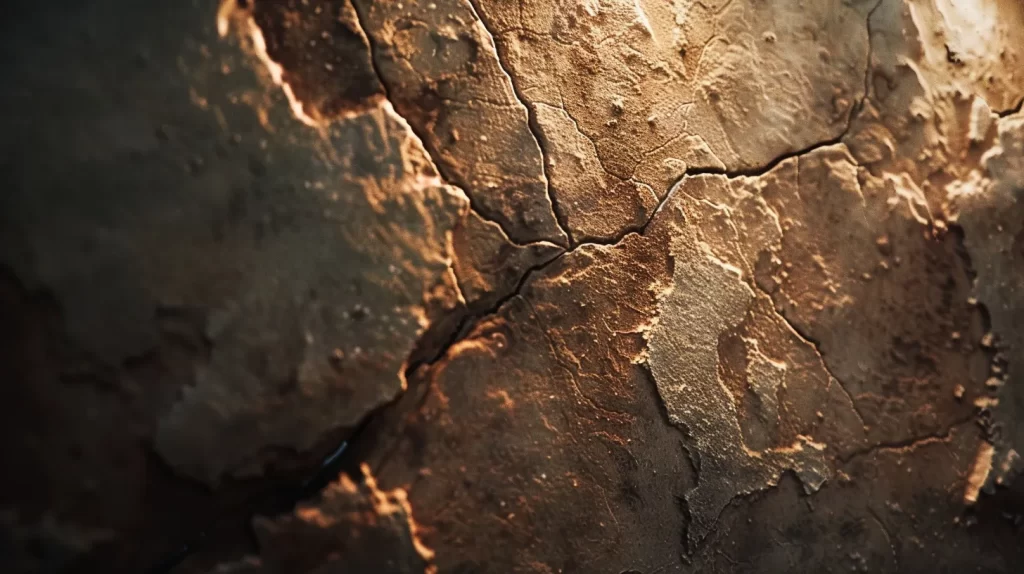
Visible cracks in walls or foundations can signal underlying moisture issues that should not be overlooked. Different types of cracks may indicate specific concerns, while assessing their severity is crucial for understanding their impact. This section will explore the connection between cracks and potential leak sources, highlight prevention measures against structural damage, and present various repair options for affected areas.
Types of Cracks Indicative of Moisture Issues
Types of cracks in walls or foundations can reveal significant moisture issues within a home. For instance, horizontal cracks often indicate a pressure build-up due to water saturation, while vertical cracks may suggest settling or movement related to drainage problems. Homeowners should carefully assess these cracks, as neglecting them can lead to escalating damage and costly repairs associated with hidden leaks.
Assessing Severity and Impact of Cracks
Assessing the severity and impact of cracks in walls or foundations is vital for homeowners concerned about hidden leaks. Cracks should be evaluated based on their width and direction—horizontal cracks may indicate serious water pressure issues, while vertical cracks might suggest settling, which can also be linked to moisture problems. Addressing these cracks promptly can prevent further structural damage and the complications that arise from overlooked leaks, ensuring the safety and integrity of the home.
Connection Between Cracks and Leak Sources
Visible cracks in walls or foundations can often indicate hidden leaks within a home. Horizontal cracks may suggest pressure buildup from water saturation, while vertical cracks could point to settlement linked to drainage issues. Homeowners should closely monitor these signs, as timely assessments of the cracks can lead to identifying the source of leaks and preventing further structural damage.
Prevention Measures for Structural Damage
Preventing structural damage from hidden leaks requires proactive measures by homeowners. Regular inspections of the home’s foundation and walls can help identify early signs of moisture issues before they escalate. Proper drainage systems and maintaining clean gutters are essential in diverting water away from the home, which reduces the risk of pressure buildup and subsequent cracks in walls or foundations.
Repair Options for Affected Areas
Homeowners noticing visible cracks in walls or foundations must act quickly to prevent further damage. Repair options include filling smaller cracks with epoxy or polyurethane sealants, which can effectively restore structural integrity. For larger cracks, professional evaluation and potential underpinning or foundation stabilization may be necessary to address underlying moisture issues and preserve the safety of the home.
6. Ceilings Bowing or Bulging
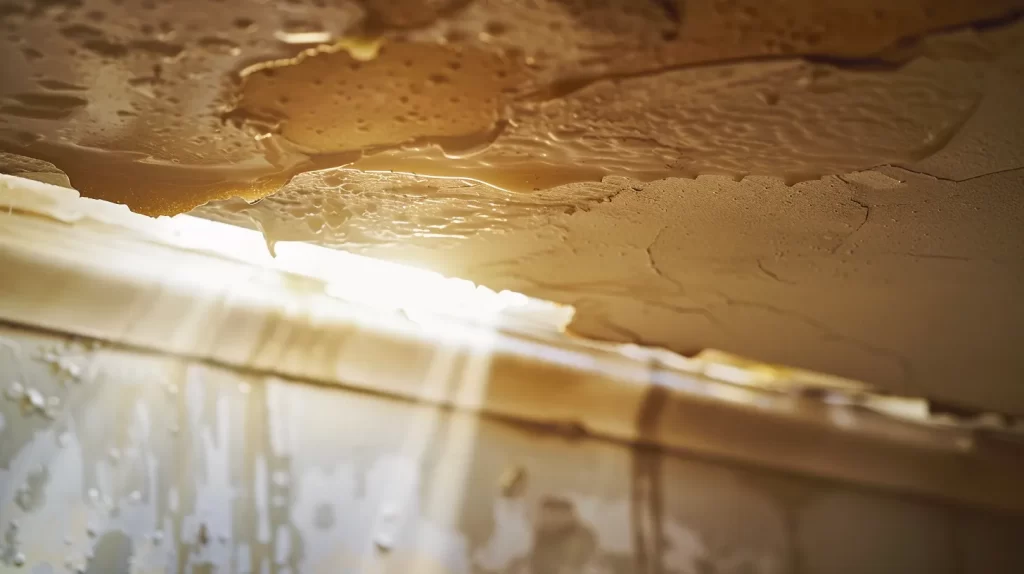
Ceilings bowing or bulging often indicate underlying moisture issues that require immediate attention. Understanding the causes of ceiling distortion is crucial, along with assessing the degree of damage to prevent structural instability. This section discusses how to repair bowed ceilings and outlines preventative measures to minimize future problems, ensuring a safe living environment for homeowners.
Understanding Causes of Ceiling Distortion
Ceilings bowing or bulging can often result from hidden leaks that saturate the underlying materials. Water intrusion may weaken structural components, leading to visible distortion. Homeowners should be vigilant, as delayed attention to these signs can escalate to serious structural integrity issues, necessitating costly repairs and potential safety hazards.
How to Assess the Degree of Damage
Assessing the degree of damage in bowing or bulging ceilings begins with a visual inspection for any visible sagging or discoloration. Homeowners should use a level to check if the surface is even, noting any pronounced dips or rises, which may indicate moisture accumulation impacting structural integrity. Engaging a professional for a thorough evaluation ensures that underlying issues are identified, preventing potential hazards associated with hidden leaks.
Potential for Structural Instability
Ceilings that are bowing or bulging can signal significant underlying moisture problems, leading to potential structural instability. When water accumulates in the materials above, it weakens the structural framework, increasing the risk of collapse or further damage. Homeowners should consider engaging a restoration professional to assess these conditions and address any hidden leaks promptly to safeguard their property and ensure a safe living environment.
Repairing Bowed Ceilings
Repairing bowed ceilings involves identifying the source of moisture and addressing any underlying leaks promptly. Once the leak is fixed, homeowners may need to remove and replace damaged ceiling materials to restore structural integrity. Consulting with a professional can provide valuable insights on the best repair methods, ensuring long-term stability and safety in the living space.
Preventative Measures for Future Issues
To prevent potential issues with bowing or bulging ceilings, homeowners should regularly inspect their roofing and plumbing systems. Ensuring proper ventilation in attics and other enclosed spaces helps to minimize moisture accumulation, which can lead to ceiling distortion. Additionally, engaging professionals for routine maintenance and prompt repairs can safeguard the home against hidden leaks, maintaining structural integrity and overall safety.
7. Increased Humidity Levels
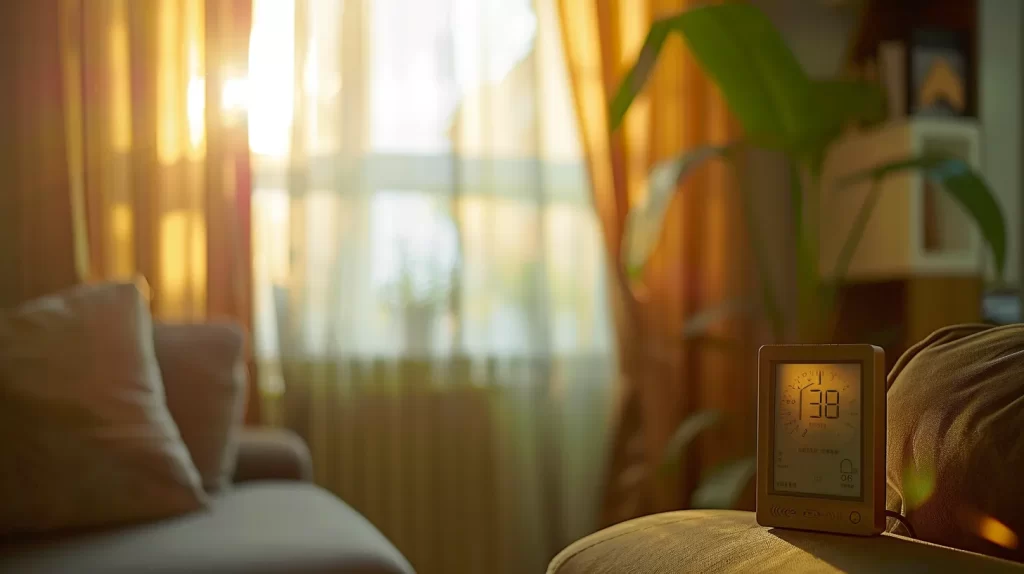
Recognizing signs of excessive humidity is crucial for homeowners, as it directly links to hidden leaks and potential health risks. Tools for measuring indoor humidity levels can aid in detecting moisture issues. Addressing high humidity not only improves air quality but also prevents mold growth and other complications. This section explores these topics and offers effective solutions to manage humidity levels.
Recognizing Signs of Excessive Humidity
Recognizing signs of excessive humidity is crucial for homeowners, as it often points to hidden leaks. High humidity can manifest as condensation on windows, a damp smell, or visible mold growth in areas like bathrooms and kitchens. Monitoring indoor humidity levels can help detect potential moisture issues early, preventing further damage and safeguarding the health of residents by reducing the risk of mold-related health problems.
Tools for Measuring Indoor Humidity
Measuring indoor humidity is essential for homeowners concerned about hidden leaks and overall air quality. Utilizing tools like hygrometers can provide accurate readings of moisture levels in the home, allowing for timely interventions if humidity exceeds recommended ranges. By regularly monitoring humidity and addressing any fluctuations, homeowners can effectively prevent mold growth and other moisture-related issues that stem from undetected leaks.
Health Implications of High Humidity
High humidity levels can pose significant health implications for homeowners, as excessive moisture creates a breeding ground for mold and mildew. These conditions can lead to respiratory issues, allergic reactions, and other health complications for residents, particularly those with pre-existing conditions such as asthma. By addressing hidden leaks promptly and reducing indoor humidity, homeowners can improve air quality and safeguard their family’s health, ensuring a safe living environment.
Link Between Humidity and Water Leaks
The link between humidity and water leaks is significant, as high humidity often indicates underlying moisture issues within a home. When humidity levels rise, it can create an environment conducive to mold growth, suggesting the presence of hidden leaks. Homeowners should monitor humidity closely, as unchecked moisture can lead to severe structural damage and health issues, making early detection critical for effective restoration solutions.
Solutions to Manage Humidity Levels
To manage humidity levels effectively, homeowners should consider using dehumidifiers, especially in areas prone to moisture such as bathrooms and basements. Regularly checking and maintaining ventilation systems can also reduce humidity, facilitating better air circulation throughout the home. Implementing these solutions not only improves indoor air quality but also mitigates the risk of mold growth associated with hidden leaks.
8. Sounds of Running Water
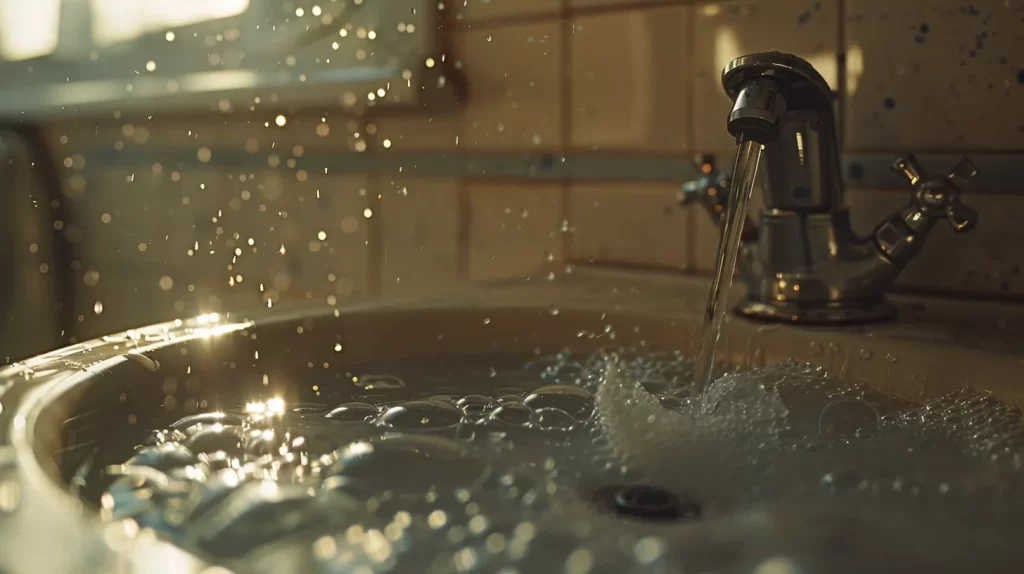
Sounds of running water may indicate hidden leaks within a home, making it crucial to identify their sources. Conducting an acoustic inspection can help pinpoint unusual noises in common areas such as bathrooms and kitchens. Understanding the implications of continuous running sounds and knowing how to investigate and address these issues can prevent further damage and protect the home’s integrity.
Identifying Sources of Unusual Noises
Identifying sources of unusual noises, such as the sounds of running water, is critical for homeowners to uncover potential hidden leaks. These sounds often occur in areas where plumbing is present, such as bathrooms, kitchens, or basements. To effectively evaluate these noises, homeowners should conduct a thorough inspection of plumbing fixtures, checking for any visible signs of leaks or water damage that may require immediate professional attention.
Conducting an Acoustic Inspection
Conducting an acoustic inspection involves listening carefully for sounds of running water that may indicate hidden leaks. Homeowners should focus on areas where plumbing is present, including bathrooms, kitchens, and basements, noting any unusual noises. This proactive approach allows for early detection of water issues, ultimately preventing costly damage and ensuring the integrity of the home.
Common Home Areas for Sound Detection
Common home areas for sound detection include bathrooms, kitchens, and basements, where plumbing fixtures are frequently located. Homeowners should be attentive to any unusual noises in these areas, such as dripping or running water, which could indicate hidden leaks. Conducting regular checks in these spaces allows for early identification of issues, ultimately preventing costly water damage and ensuring the ongoing integrity of the home.
Implications of Continuous Running Sounds
The implications of continuous running sounds within a home can be quite serious, signaling potential hidden leaks that require immediate attention. Homeowners may experience increased water bills and potential damage to walls or floors if leaks are left unaddressed. It is essential to conduct a thorough inspection of areas such as bathrooms and kitchens, where plumbing is prevalent; identifying the source early can save considerable expenses and protect the property’s overall integrity.
How to Investigate and Address the Issue
To investigate and address the issue of sounds of running water, homeowners should first identify the source of these unusual noises. This can be done by listening attentively in areas like bathrooms and kitchens, where plumbing is common. If sounds persist, a thorough inspection of fixtures, pipes, and appliances is necessary to detect any visible leaks or signs of water damage that may require immediate attention from restoration professionals trained in leak detection.
9. Overflowing Gutters and Downspouts
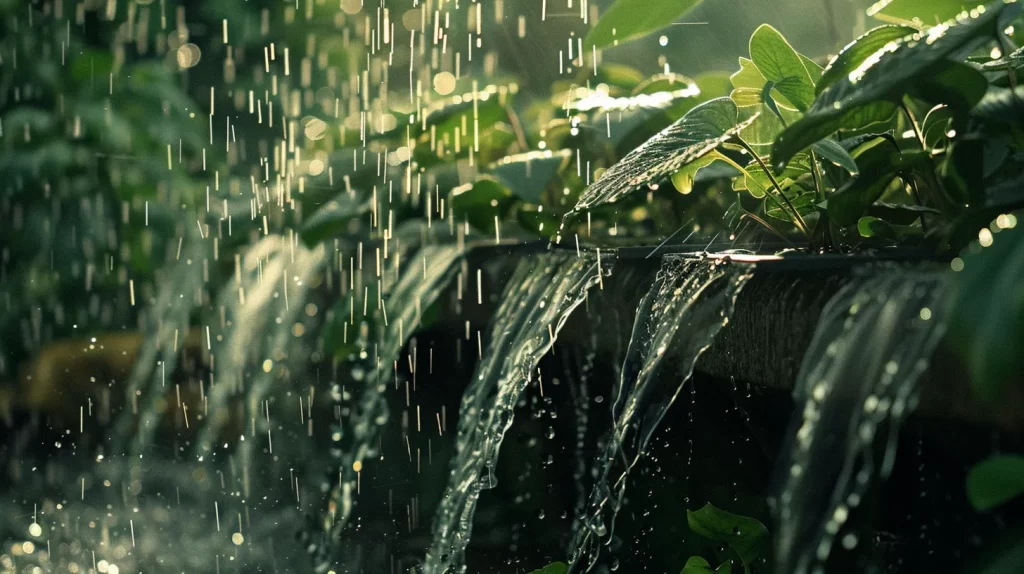
Understanding the role of gutters is essential for homeowners to prevent hidden leaks. Signs of blockages and potential overflows can lead to significant drainage issues. Ignoring these problems may result in costly repairs, making regular cleaning and maintenance of gutter systems crucial. Homeowners should realize the importance of proper water flow to protect their property from potential water damage.
Understanding the Role of Gutters
Understanding the role of gutters is crucial for homeowners to effectively manage water around their property and prevent hidden leaks. Gutters are designed to channel rainwater away from the foundation of a home, reducing the risk of water pooling and potential damage to walls and basements. Regular maintenance, such as cleaning out debris and ensuring proper alignment, helps to protect against overflow that can lead to structural issues and costly repairs.
Signs of Blockages and Potential Overflows
Signs of blockages in gutters and downspouts can often lead to overflowing, which poses risks for hidden leaks around a home. Homeowners should look for water pooling around the foundation, as well as debris buildup, which can restrict water flow and cause overflows during heavy rains. Regular inspections and maintenance of these systems are essential to prevent potential drainage issues that could result in costly water damage and structural concerns.
Consequences of Ignoring Drainage Issues
Ignoring drainage issues related to overflowing gutters and downspouts can have serious consequences for homeowners. Water can accumulate around the foundation, leading to potential structural damage and serious leaks within the home. Such neglect can result in costly repairs—far exceeding the expense required for regular gutter maintenance—along with health hazards arising from mold growth due to persistent moisture intrusion.
Cleaning and Maintaining Gutter Systems
Cleaning and maintaining gutter systems is essential for homeowners to prevent overflowing, which can lead to hidden leaks and extensive water damage. Regularly inspecting gutters and downspouts for debris, such as leaves and twigs, ensures unobstructed water flow, especially before heavy rainfalls. By investing time in routine maintenance, homeowners can protect their property from the significant repair costs that arise from water pooling around foundations and potential mold growth inside the home.
Realizing the Importance of Proper Water Flow
Proper water flow is essential for maintaining the integrity of a home, particularly when it comes to gutters and downspouts. They are designed to channel rainwater away from the foundation, mitigating the risk of flooding and hidden leaks. Homeowners should consistently check for blockages or debris that may impede this flow, as neglecting these issues can result in costly repairs, including potential structural damage and mold growth that may develop from excessive moisture accumulation.
10. Wet Spots in the Yard
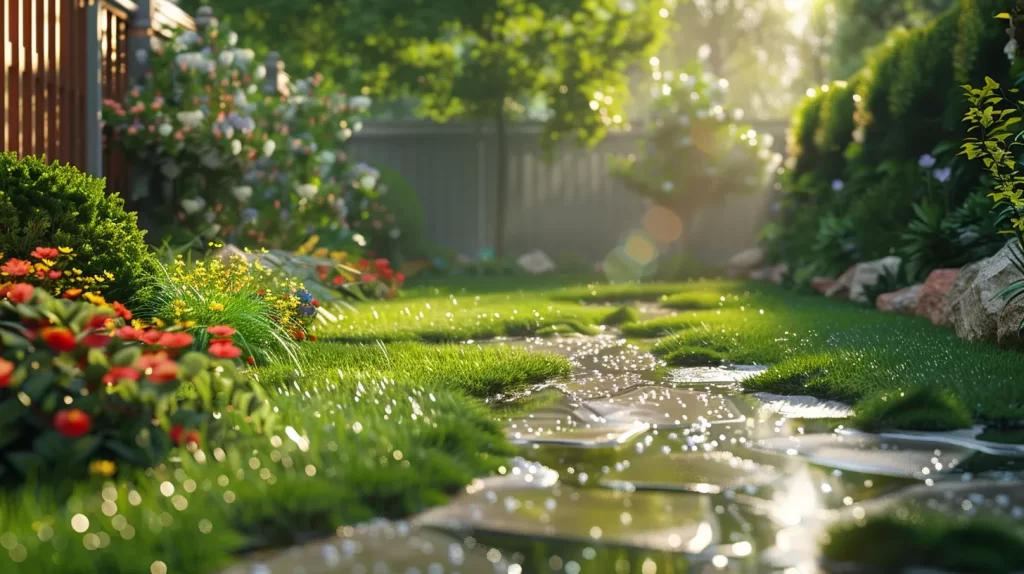
Wet spots in the yard often indicate potential underground leaks, making it crucial for homeowners to identify these signs early. Assessing yard drainage patterns can help reveal issues that may lead to significant water damage if left unattended. Unaddressed wet areas can cause structural complications and compromise landscaping, while fixing drainage problems is essential for maintaining outdoor spaces. Regular monitoring of landscapes for changes ensures that any hidden leaks are quickly managed.
Identifying Signs of Underground Leaks
Identifying signs of underground leaks often begins with observing wet spots in the yard, which can indicate issues with buried plumbing or irrigation systems. Homeowners should look for areas where the grass appears greener or lusher than surrounding patches, as this can suggest excess moisture underground. Promptly addressing these wet areas is essential to prevent potential structural damage and preserve landscaping, making it crucial for homeowners to monitor their yards for any abnormal moisture patterns.
Assessing Yard Drainage Patterns
Assessing yard drainage patterns is crucial for homeowners to identify hidden leaks effectively. Observing how water flows in the yard can unveil potential issues with underground plumbing systems or irrigation networks. For instance, if certain areas remain perpetually soggy or there are noticeable grass color differences, it may indicate excess moisture from leaks, requiring prompt attention to prevent damage to the home’s foundation and landscaping.
Consequences of Unattended Wet Areas
Unattended wet areas in the yard can lead to significant consequences for homeowners, including potential structural damage to the foundation and increased risk of mold growth inside the home. Persistent moisture promotes unhealthy conditions and can also compromise landscaping, resulting in the loss of plants and a declining aesthetic appeal. It is essential for property owners to address these signs promptly to maintain both the integrity of their homes and the health of their outdoor spaces.
Fixing Drainage Problems in Outdoor Spaces
Fixing drainage problems in outdoor spaces involves assessing the soil and landscape layout to ensure effective water flow away from the home’s foundation. Homeowners should consider installing drainage systems, such as French drains or swales, which help redirect excess water accumulating in wet spots. Regular maintenance, including clearing debris from gutters and downspouts, is also crucial to prevent future moisture issues and protect the property from potential damage associated with hidden leaks.
Monitoring Landscapes for Changes
Monitoring landscapes for changes is essential for homeowners to detect hidden leaks early. Keeping an eye on the yard for unusual moisture levels, such as persistent wet spots or areas that appear greener than others, can indicate potential underground plumbing issues. By regularly assessing these changes, homeowners can address the source of moisture promptly, preventing more significant damage to both their property and landscaping.
Key Takeaways on Detecting Hidden Water Leaks in Your Home
Recognizing the top 10 warning signs of hidden leaks is vital for protecting both the integrity of a home and the health of its occupants. Homeowners should remain vigilant about unusual increases in water bills, visible stains, moldy odors, and other indicators that suggest potential moisture issues. Addressing these warning signs early can prevent costly repairs and health hazards such as mold growth and structural damage. Taking proactive steps today ensures a safer and more secure living environment for families.
Our team has 15+ years of skilled experience
Experienced, professionals proudly serving San Ysidro, Chula Vista, National City, Spring Valley, Downtown SD, North Park, Point Loma, Pacific Beach, La Jolla, Del Mar, Solana Beach, Rancho Santa Fe, Coronado, Mission Hills, and more!